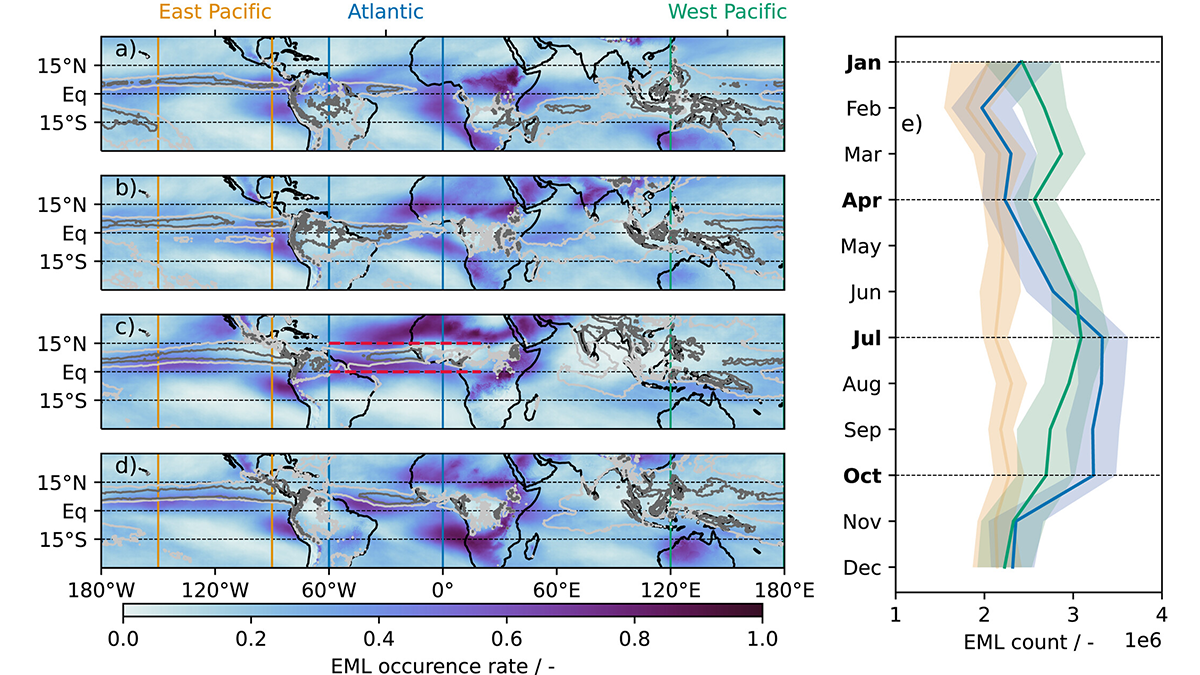Editors’ Highlights are summaries of recent papers by AGU’s journal editors.
Source: Geophysical Research Letters
Past observational studies in the tropics noticed the occurrence of a moist layer in the mid-troposphere near the melting level. These elevated moist layers (EML) are also present in cloud resolving simulations of convective aggregation. The EML presence has been associated with an overturning circulation above the boundary layer which helps to enhance convection.
Prange et al. [2024] provide a multi-year analysis of EML in reanalysis, including their seasonality, and characteristics in the rain belts of different ocean basins. In the case of the Atlantic, there is a very strong seasonal cycle, with a minimum occurrence of EML in the winter and maximum in the summer. Furthermore, the vertical structures of the EML also vary, with a more bottom-heavy circulation in July than in January. The EMLs occur both north and south of the Atlantic summer Intertropical Convergence Zone (ITCZ). The EMLs south of the ITCZ are embedded in the Hadley cell, coupled to the large-scale circulation and their source are mostly likely the deep convection within the ITCZ. In contrast, north of the Atlantic summer ITCZ, the EMLs typically form in the West African monsoon in an area with zonal wind shear.
Citation: Prange, M., Stevens, B., & Buehler, S. A. (2024). Seasonal emergence and circulation coupling of moist layers over the tropical Atlantic. Geophysical Research Letters, 51, e2024GL108865. https://doi.org/10.1029/2024GL108865
—Suzana Camargo, Editor, Geophysical Research Letters

